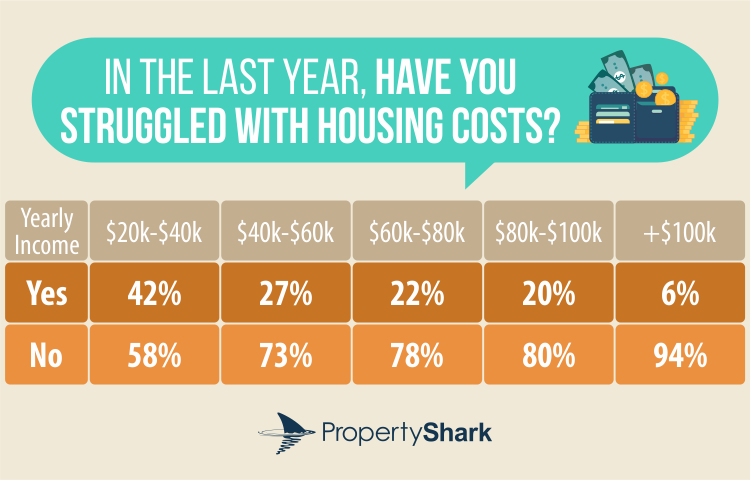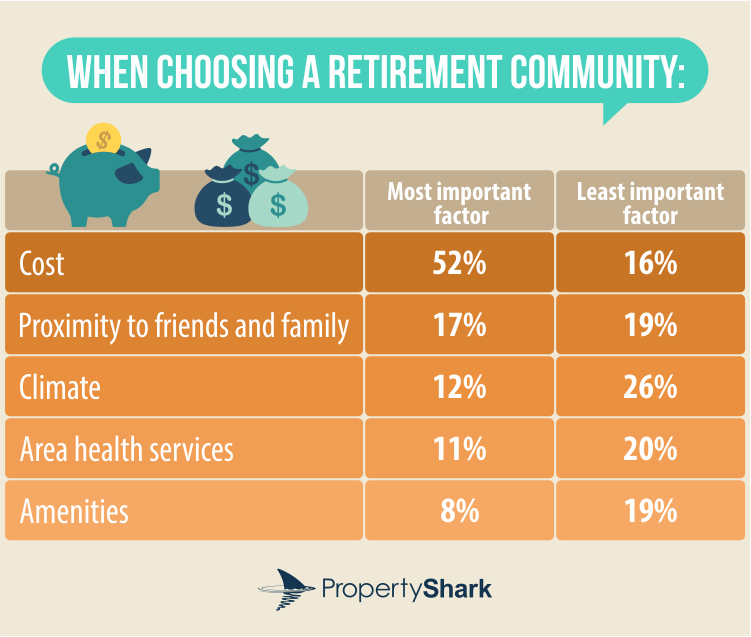Real estate listings website PropertyShark says a recent survey of 1,000 people it carried out shows that almost one in three adults aged 45 and above are struggling to cover their housing costs.

The survey found that homeowners with low incomes tend to report the biggest housing costs burden, but the issue is actually present across all income levels. For example, 42% of those earning between $20,000 to $40,000 a year are struggling to pay for their housing. But 27% of those earning $40,000 to $60,000 said the same. Those earning $60,000 to $80,000, and $80,000 to $100,000 respectively, reported burdens at 22% and 20%. Moreover, even 6% of those who make more than $100,000 a year are struggling, the survey found.
“Beyond shifting attitudes regarding retirement—with many older adults choosing to stay employed for reasons other than financial concerns—there is also a strong need for continued employment to keep up with the daily cost of life,” researchers note in the study.
The survey highlighted that more than half of those aged 45 and above wish to remain in their current home during their senior years, but less than two out of five had more than $100,000 saved for their retirement, which could make this difficult.
Almost one in five older adults have explored ideas on how to monetize the extra space in their homes by renting it out. Younger baby boomers and Generation Xers are the most open to this idea. Twenty-five percent of adults planning to retire in more than five years and 16% of those planning to retire in more than 10 years both reported that they’ve explored the renting idea. They may list their homes on Airbnb or similar platforms to help supplement incomes.
U.S. Census data shows that one in five Americans will be aged 65 or older by 2030, and by 2035, older adults will outnumber children for the first time in history.
As such, developers are paying more attention to what this generation wants to help meet their current and future housing needs. More than one in five older adults say they would like to retire to less than 1,000 square feet. The suburbs reign as their top preference (at 45%), but it’s closely trailed by rural living at 30%. City living is third at 15% and senior living communities is at 10%. Senior living communities tend to be popular among seniors who have already retired, while only 11% of survey respondents who don’t plan to retire say they want to live in such a place, according to the survey.

Cost is the main priority guiding their housing choice, researchers found. “Cost is, by far, the most significant factor, followed by proximity to friends and family, area amenities, the quality and proximity of health services, and the climate,” researchers note.